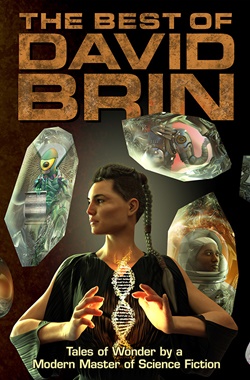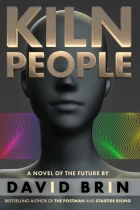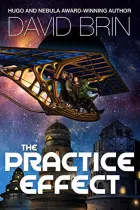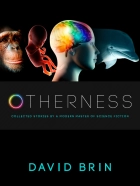 In Singularity or Transhumanism: What Word Should We Use to Discuss the Future? on Slate, Zoltan Istvan writes, “The singularity people (many at Singularity University) don’t like the term transhumanism. Transhumanists don’t like posthumanism. Posthumanists don’t like cyborgism. And cyborgism advocates don’t like the life extension tag. If you arrange the groups in any order, the same enmity occurs.” See what the proponents of these words mean by them…
In Singularity or Transhumanism: What Word Should We Use to Discuss the Future? on Slate, Zoltan Istvan writes, “The singularity people (many at Singularity University) don’t like the term transhumanism. Transhumanists don’t like posthumanism. Posthumanists don’t like cyborgism. And cyborgism advocates don’t like the life extension tag. If you arrange the groups in any order, the same enmity occurs.” See what the proponents of these words mean by them…
…and why the old talmudic rabbis and jesuits are probably laughing their socks off.
==Progress toward AI?==
Baby X, a 3D-simulated human child is getting smarter day by day. Researchers at the Auckland Bioengineering Institute Laboratory for Animate Technologies in New Zealand interact with the simulated toddler, reading, teaching, smiling, playing games, even singing into the computer’s microphone and webcam. The blonde youngster mimics facial expressions, laughs, reads words, even cries when he is left alone.
 “An experiment in machine learning, Baby X is a program that imitates the biological processes of learning, including association, conditioning and reinforcement learning. By algorithmically simulating the chemical reactions of the human brain— think dopamine release or increased oxytocin levels— and connecting them with sensory digital input, when Baby X learns to imitate a facial expression, for instance, software developers write protocols for the variable time intervals between action and response. Effectively “teaching” the child through code, while engineering such a program is no cakewalk, the result is an adorably giggling digital baby with an uncanny ability to learn through interaction,” writes Becket Mufson, in the Creators Project.
“An experiment in machine learning, Baby X is a program that imitates the biological processes of learning, including association, conditioning and reinforcement learning. By algorithmically simulating the chemical reactions of the human brain— think dopamine release or increased oxytocin levels— and connecting them with sensory digital input, when Baby X learns to imitate a facial expression, for instance, software developers write protocols for the variable time intervals between action and response. Effectively “teaching” the child through code, while engineering such a program is no cakewalk, the result is an adorably giggling digital baby with an uncanny ability to learn through interaction,” writes Becket Mufson, in the Creators Project.
This is precisely the sixth approach to developing AI that is least discussed by “experts” in the field… and that I have long believed to be essential, in several ways. Above all, by raising them as our children – even fostering them to homes in small robot bodies – we will gain many crucial advantages – that I lay out (somewhat) in Existence.
Meanwhile, Cornell’s Robo Brain is currently learning from the internet — downloading and processing about 1 billion images, 120,000 YouTube videos, and 100 million how-to documents and appliance manuals, all being translated and stored in a robot-friendly format, accessible to ‘helper’ robots who will function in our factories, homes, and offices. “If a robot encounters a situation it hasn’t seen before it can query Robo Brain in the cloud,” said one researcher. Follow its progress on the Robobrain website.
Meet Jibo, advertised as “the world’s first family robot.” Kinda creepy but attractive too…
 Ever hear of “neuromorphic architecture?” Silicon chip design that uses transistors — (5 billion of them in the latest IBM chip) – to create analogues of the nonlinear response patterns of biological neurons. The latest version, from IBM, is called “True North” and it is simply spectacular. Its prodigious pattern recognition capabilities are only matched by its stunning (by four orders of magnitude(!)) power efficiency. This is where Moore’s Law, augmented by new neuronal and parallelism software, may truly start delivering.
Ever hear of “neuromorphic architecture?” Silicon chip design that uses transistors — (5 billion of them in the latest IBM chip) – to create analogues of the nonlinear response patterns of biological neurons. The latest version, from IBM, is called “True North” and it is simply spectacular. Its prodigious pattern recognition capabilities are only matched by its stunning (by four orders of magnitude(!)) power efficiency. This is where Moore’s Law, augmented by new neuronal and parallelism software, may truly start delivering.
Now… How to keep what we produce sane? And where on the chip – pray tell – do the Three Laws reside?
Ah, well… I have explored the implications (yin and yang) of the Asimovian laws in my sequel which tied up Isaac’s universe – Foundation’s Triumph. Meanwhile, serious minds are grappling with the problem of “how to keep them loyal.” For example…
==Creating Superintelligence==
 Nick Bostrom has published the book “Superintelligence: Paths, Dangers, Strategies,” that is well-reviewed by Andrew Leonard in Salon.
Nick Bostrom has published the book “Superintelligence: Paths, Dangers, Strategies,” that is well-reviewed by Andrew Leonard in Salon.
“Risks that are especially difficult to control have three characteristics: autonomy, self-replication and self-modification. Infectious diseases have these characteristics, and have killed more people than any other class of events, including war. Some computer malware has these characteristics, and can do a lot of damage…
“But microbes and malware cannot intelligently self-modify, so countermeasures can catch up. A superintelligent system [as outlined by Bostrom would be much harder to control if it were able to intelligently self-modify.” writes Bostrom.
Nick Bostrom makes a persuasive case that the future impact of AI is perhaps the most important issue the human race has ever faced. Instead of passively drifting, we need to steer a course. Still, his litany of “be careful what you wish for” parables is taken straight from the pages of a century of science fictional “what-if” scenarios. Geeky sci fi archivists need to be present, during the programming, to point out: “you may want to rephrase that… cause way back in 1947 Leigh Brackett showed that it could be misconstrued as…”
When did homo sapiens become a more sophisticated species? Not until our skulls underwent “feminization.” Interesting article! In fact the mystery of the First Great Renaissance… the burst of human creativity around 45,000 years ago… is discussed in EXISTENCE!
But — if I may mention it — the real correlation with this notion… that sexual selection resulted in gentler, more “feminized” males, was presaged by this paper of mine… Neoteny and Two-Way Sexual Selection in Human Evolution.
==Developing Brains==
 Researcher Talma Hendler has found evidence for two types of empathy, each tied to a different network of brain regions. One type she calls mental empathy, which requires you to mentally step outside yourself and think about what another person is thinking or experiencing. Parts of the frontal, temporal, and parietal cortex that make up this network. The other type she calls embodied empathy; this is the more visceral in-the-moment empathy you might feel when you see someone get punched in the guts. Very cogent and thought provoking.
Researcher Talma Hendler has found evidence for two types of empathy, each tied to a different network of brain regions. One type she calls mental empathy, which requires you to mentally step outside yourself and think about what another person is thinking or experiencing. Parts of the frontal, temporal, and parietal cortex that make up this network. The other type she calls embodied empathy; this is the more visceral in-the-moment empathy you might feel when you see someone get punched in the guts. Very cogent and thought provoking.
This interesting article in Wired explores how movies exploit both of these networks to make you identify with the characters. Only the manipulation is now going scientific!
And veering a bit… When did modern humans arrive in Europe, and by how much did they overlap with our fading cousins, the Neandertals? New studies suggest it all happened earlier than most had assumed, perhaps around …45,000 years ago.
Now throw in…. Children and adolescents with autism have a surplus of synapses in the brain, and this excess is due to a slowdown in a normal brain “pruning” process during development.
Hmmmmm.
==and organs==
Scientists have for the first time grown a complex, fully functional organ from scratch in a living animal by transplanting cells that were originally created in a laboratory to form a replacement thymus, a vital organ of the immune system.
By deciphering the detailed gene expressions by which a lizard regrows its tail, scientists hope to re-ignite regrowth processes in mammals like us, that have been dormant for 200 million years. Both of these stories are straight from my story “Chrysalis” in this month’s ANALOG!
==Miscellanea==
Scientists report using laser light in ultrafast pulses to control the quantum state of electrons contained inside nanoscale defects located in a diamond, and also observe changes in that electron over a period of time. The findings could be an important milestone on the road to quantum computing.
 Another team has devised a way to make microscopes magnify 20 times more than usual. This magnification allows scientists to see and identify substances and matter as minuscule as or even smaller than a virus.
Another team has devised a way to make microscopes magnify 20 times more than usual. This magnification allows scientists to see and identify substances and matter as minuscule as or even smaller than a virus.
Direct synthesis of ammonia from air and water? At low temperatures and pressures? If this membrane method can bypass the usual harsh processes, the news can be significant for liberating poor farmers everywhere to make their own fertilizer.
Looks plausible… if amazing! A transparent luminescent solar concentrator developed in Michigan can be used to cover anything that has a flat, clear surface. Visible light passes through. But organic molecules absorb invisible wavelengths of sunlight such as ultraviolet and near infrared, guiding those packets to the edge of the solar panel, where thin strips of photovoltaic solar cells pick it up and convert it into energy. Fascinating… another potential game changer.
Stanford scientists develop water splitter that runs on ordinary AAA battery.
How to tell if a Chelyabinsk style meteorite came from an asteroid? Here’s the basic rule of thumb. “The speed of whatever collides with Earth’s atmosphere depends on its orbit, which in turn depends on its source. The impactor’s entry at 19 km/s means that it came from the asteroid belt between Mars and Jupiter, not from a ballistically launched missile, whose speed is less than 11.2 km/s; a short-period comet, with an average speed of 35 km/s; or a long-period comet with an average speed of 55 km/s. As investigators began retracing the path of the meteor that blazed across the sky, their reconstructed orbit bore out that provenance.”
Oh, anything much faster than 60 kps either fall naturally from outside the solar system… or was accelerated by someone with boojum powers and maybe ill intent!
 Recommended: what if? Serious Scientific Answers to Absurd Hypothetical Questions by Randall Munroe (of the brilliant xkcd).
Recommended: what if? Serious Scientific Answers to Absurd Hypothetical Questions by Randall Munroe (of the brilliant xkcd).
Researchers from UC San Diego’s structural engineering department are using drones to capture unique views of the earthquake damage to Napa’s historic landmarks. Our own Falko Kuester explains how this new tech is helping.
And finally:
Don’t bogart that puffer, my friend. Dolphins pass around a puffer fish — apparently to get high off its toxins. After a few chomps, you no longer give a fugu.



















